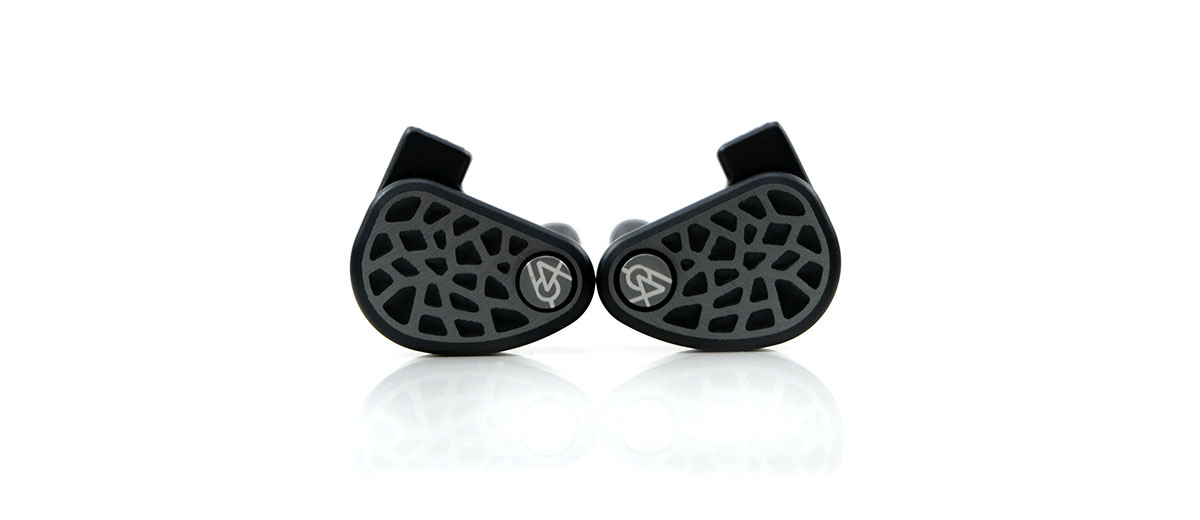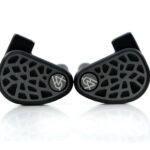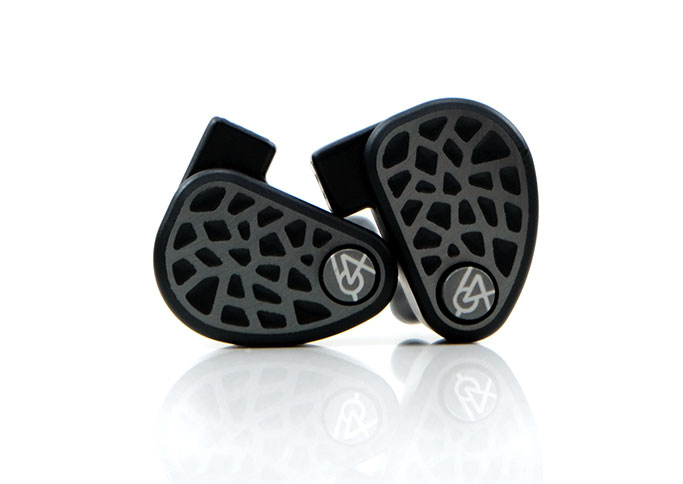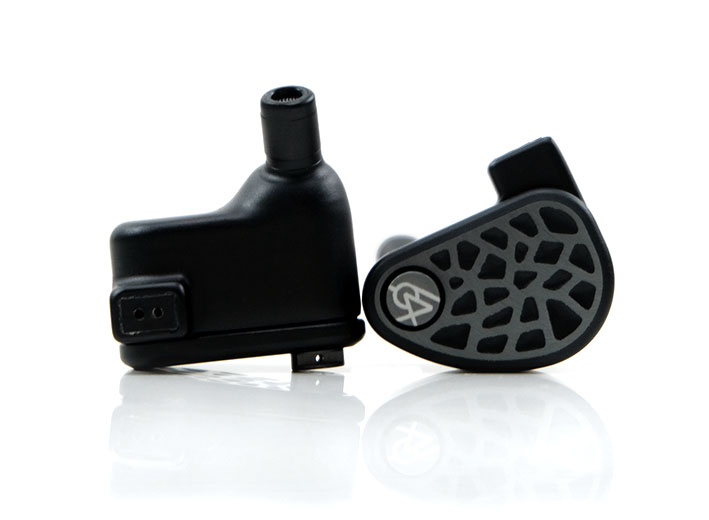The 64 Audio U18s is a high-end 18 BA driver universal monitor featuring apex filter technology, tia tubeless design, and LID non-linear impedance management. It is priced at $2999.
Disclaimer: The 64 Audio U18s sent to us is a sample in exchange for our honest opinion in this review. We thank the team at 64 Audio for giving us this opportunity.
To read more about 64 Audio products we reviewed on Headfonics click here.
Note, this 2-page review follows our new scoring guidelines for 2021 which you can read up on here.
This is the first time I have visited the ’18’ series from 64 Audio since the original launch in late 2016 of the A18 Tzar or the A18T. Back then this one of the best custom IEMs on the market and still an incredible performer 4-5 years later.
The 18 BA driver count is still a magnificent achievement and though possibly one could see it as part of the ‘driver count’ wars of a few years back, some of the implementations were unique to 64 Audio. This included their apex filter system as well as the introduction of tia technology with that single high-frequency tia driver.
Well, 64 Audio are back in 2021 with a new and updated version of the ’18’ series, or the U18s. The ‘s’ stands for ‘Studio’ version and is pitched more for studio pros but still classified as a flagship-level universal IEM under their Audiophile Series. Like the T version, it comes in both universal and custom formats and packing most of the latest and greatest tech from 64 Audio in 2021.
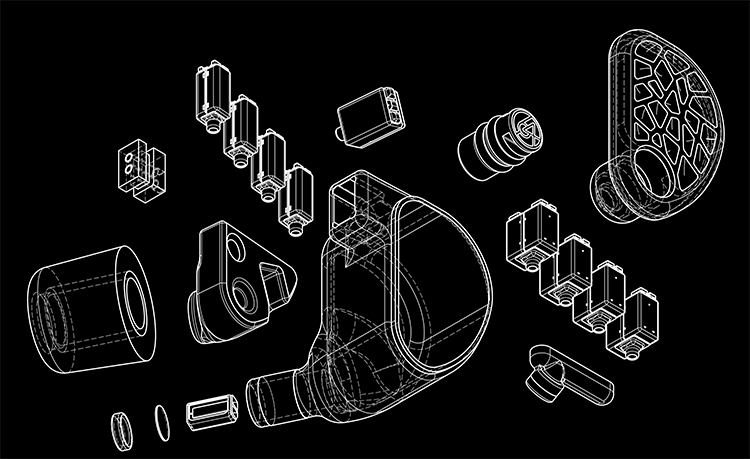
Tech Highlights
Configuration
The U18s is a universal format 18 driver monitor with an all-BA design consisting of 8 drivers for the lows, 8 for the mids, 1 for the mid-highs, and a tia driver for the highs.
This is threaded together with an integrated 4-way electronic passive crossover and offering a very easy to drive 8Ω level and a medium efficiency rating for a monitor of 106dB SPL. I will note from my older A18T review that the rated sensitivity is a bit higher on the original version at 9Ω and 116dB SPL and still a bit more sensitive on the latest U18T at 111dB SPL.
Because of the different ratings, I cannot say for sure if every single driver in there is the same make and model over the last 5 years or simply tweaked. However, this should translate to slightly different current requirements, (volume) between old and new which you can find out more about on page 2.
tia
The U18s comes packed with their signature tech and logically that does include their tia technology which made its debut way back in late 2016/2017 on the original A18 model.
Tia stands for tubeless in-ear audio and is a key unique selling point for both the A18t, U18t, and their current universal flagship the Fourté.
At the heart of tia is an open balanced BA design and is pitched as being far more open in sound than a sealed and tubed BA driver which quite a lot of competing monitors still use. Of course, tubeless drivers are now more prevalent in the market but each has its own unique implementation.
With the diaphragm free of obstruction the contention is that a lot of the vibrations and resonances you get with closed or tubed designs will be gone.
No more tubes and no more dampers leave more room for the chamber design and a switch to a single wide-bore nozzle. Wide bores produce a more natural sound to my ears than individual channels delivered in tubes right up to the tip.
apex
The U18s also continues to see the use of 64 Audio’s apex technology with the inclusion of 3 modules: the -10db mX module, the -15dB m15 module, and the -20dB m20 module. Aside from the M26 solid plug which is only for high-end earplugs, that is the full complement of available filters.
apex is short for Air Pressure Exchange. Essentially the end goal is to reduce the level of pneumatic pressure being delivered alongside sound pressure when inserting and using an IEM or in this case a CIEM.
By reducing this type of pressure the eardrum gets less of a workover. Thus, the potential of long-term hearing damage is reduced allowing you to safely play music at a louder level than you normally can.
apex works its magic through the modules such as the m20, m15, and mX, which are designed to fit snugly into the actual shell of the U18s. Each module has an opening at the top combined with multi-cell studio-grade TPE material inside that varies in size and composition to produce different audible and sound pressure effects.
LID
The full name for this feature is Linear Impedance Design. Those of you familiar with Custom Art’s FIBAE technology will get a fairly quick understanding of the bigger aim of LID from 64 Audio.
Basically, LID ensures that whatever the impedance level is on any given output you plug the U18s into it should not have a low-Z skew and should play true to its correct tuning.
That means for those holding a 1st gen HiBy R6 Pro or a Shanling M2s ranging from 4Ω to 10Ω the U18s should sound accurate or ‘true’.
Design
I was impressed with the Abalone blue finish on the Nio but the darker and complex CNC milled inlay U18s design is right up my alley.
Not just the faceplate but the entire shell also has a new matte finish compared to the previous polished glossy look of the Nio’s aluminum shells. The whole U18s aesthetic has a much stronger ‘noir vibe and quite a contrast to the bright reds and oranges on the older designs.
The faceplate is inspired I believe from what 64 Audio describes as natural formations so I am presuming here that’s a nod to the geo rock designs. The design is like a thick lattice effect milled from a CNC aerospace-grade aluminum billet and anodized with multiple openings all of a different shape and size.
The tone of the faceplate is a gunmetal grey which perfectly complements that matte black aluminum shell under as well as the bumpers around it.
At the corner of each faceplate, you have the apex filter socket similar to the Nio positioning but with a little bit of enhanced branding now using the latest 64 Audio logo. Unlike the Nio, there is no rear vent on the shell given it’s an all-BA design.
The form factor of the U18s is definitely the larger of the three 64 Audio universal models I have tested to date, with the other two being the tia Trió and the Nio. Not huge by IEM standards but a bit taller and most likely due to the need for space for 18 drivers, one of which is a tia closer to the nozzle.
Comfort & Isolation
The comfort levels of the U18s are much the same as the tia Trió and the Nio which I find favorable despite the weighted aluminum design which is heavier than acrylic alternatives.
The soft curves and relatively lightweight form factor barely touch the ear or press down uncomfortably. The longish stems might also be helping keep the cable up and away from the sides of your ear where sometimes pressure from the cable can develop.
Isolation
Ideally, the U18s should seal better than the tia Trió or the Nio due to the lack of rear port dynamic driver venting hole but the gap this time around was not that huge when using the same m15 filter.
That suggests any leakage is more likely from the slightly stricter aluminum shell contours and the apex filter rather than purely down to whether it has a venting port or not.
Isolation on the U18s is indeed modified when using the various apex filters. Each supplied filter with the U18s has a varying level of dB noise attenuation that you can pick up on right away. The mX filter isolates the least at -15dB with the m20 the max at -20dB. The m15, which is fitted on the U18s out of the box, is rated at -15dB.
If you want the best isolation then grab the m20 filters but be warned, the sound signature will change with the most bass response from the Nio. The m15 takes it down a notch but with less isolation and the mX isolates the least and as you would expect, offers the least amount of bass quantity of the 3 filters.
Tips
The second factor in U18s level of passive isolation are the supplied tips. The U18s included 3 types of tips, a foam variant called TrueFidelity in small, medium, and large as well as a set of single bore silicone tips in the same sizes.
The 3rd is actually a set of SpinFit CP145s which I personally found to isolate the best out of the three supplied ear tips sets as well as providing the highest level of comfort. The foam tips felt a bit more secure in my ear compared to the softer more pliable silicone tips but neither the silicone nor the foam tips did quite as well for noise attenuation.
Special mention for the cool spidery web type black tip tray holder which also neatly fits inside the carry case for on-the-go use. The tips lock on nice and secure also so they are unlikely to fall off the tray.
Packaging & Accessories
The packaging is more like the wider tia Trió box also slightly less complex in design compared to the Nio box which might be a good thing from a product point of view.
It’s a fairly large but shallow lift-lid type box with professional design finishing on the outside cover, and a padded protective layering on the inside housing the drivers, case, and accessories. On the underside of the lid, you have a signature welcome message also from the founder, Vitaliy.
The carry case is split in two inside the display side of the box with the U18s drivers and the apex filters holder in the main part of the carry case and the spider-web ear tip tray and tips in the top lid part of the display.
Underneath the lid, you will also find the 48″ Silver cable. There is no requirement for a cleaning tool accessory as the nozzle is protected by a mesh grill. The final accessory is a circular 64 Audio branded black and white sticker which you can throw on your studio carriage case of wherever delights you the most.
The drivers are well-protected with an additional foam layer inside the carry case you can reuse if you wish for daily usage. The apex filters are just underneath the “handcrafted with love #64 fam” brand paper insert.
Carry Case
The U18s ‘Premium Leather’ carry case is the same design as the Nio version. This is a rounded high-quality simulation leather and yellow stitched design, soft but strong on the outside, smells wonderfully leathery, and with the distinctive new 64 Audio logo embossed on the front.
The inside is free-design and spacious with plenty of room to fit in a cable or two, the monitors, and even the spider-wed tips tray. The sides, top, and inside of the lid are padded with a cloth material so your monitors will not suffer from any undue knocks from day-to-day carrying.
It is just marginally too big to be easily pocketable which the smaller plastic containers could offer but it will have no issues being thrown into small bags on the go.
Click on page 2 below for the stock cable, sound impressions, and pairings
Click on page 3 below for select comparisons and our verdict

